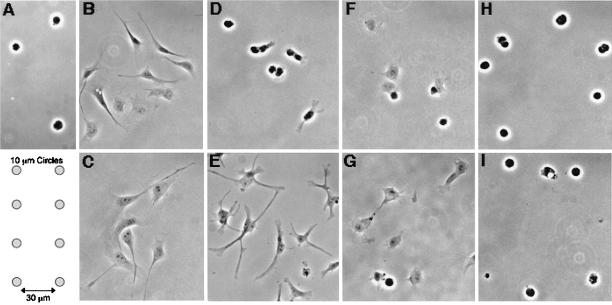Figure 1.
Different degrees of cell rounding induced by growing cells on circular micropatterns or by cytoskeletal disruption. Cells were plated on fibronectin-coated adhesive islands or on fibronectin-coated coverslips in the presence of drugs, as described in MATERIALS AND METHODS. Cells maintained a round shape when grown on 10-μm-diameter circular adhesive islands for 24 h (A; diagram showing micropattern layout below). Control cells spread on fibronectin within 3 h (B) and extended further by 24 h (C). Disruption of microfilaments with the use of 1 μg/ml Cyto D (D and E), or of microtubules with the use of 10 μg/ml Noc (F and G) led to mostly rounded cells at 3 h of treatment (D and F), but only partially rounded cells after 24 h (E and G). In contrast, disruption of microfilaments and microtubules with the use of a combination of Cyto D and Noc led to sustained cell rounding up to 24 h (H and I).

